
Basey, officially the Municipality of Basey, is a 1st class municipality in the province of Samar, Philippines. According to the 2020 census, it has a population of 56,685 people.
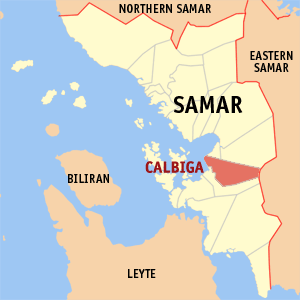
Calbiga, officially the Municipality of Calbiga, is a 4th class municipality in the province of Samar, Philippines. According to the 2020 census, it has a population of 23,310 people. The town is famous for the Langun-Gobingob Caves which is the largest cave system in the Philippines, reputed to be the second largest in Asia and the world's third largest karst formation.
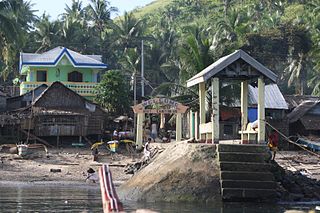
Daram, officially the Municipality of Daram, is a 3rd class municipality in the province of Samar, Philippines. According to the 2020 census, it has a population of 41,608 people.
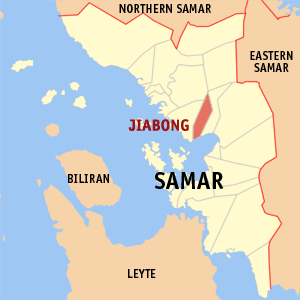
Jiabong, officially the Municipality of Jiabong, is a 5th class municipality in the province of Samar, Philippines. According to the 2020 census, it has a population of 19,205 people.

San Jose de Buan, officially the Municipality of San Jose de Buan, is a 4th class municipality in the province of Samar, Philippines. According to the 2020 census, it has a population of 7,767 people.

San Sebastian, officially the Municipality of San Sebastian, is a 6th class municipality in the province of Samar, Philippines. According to the 2020 census, it has a population of 8,704 people.

Tarangnan, officially the Municipality of Tarangnan, is a 4th class municipality in the province of Samar, Philippines. According to the 2020 census, it has a population of 25,713 people.

Zumarraga, officially the Municipality of Zumarraga, is a 5th class island municipality in the province of Samar, Philippines. According to the 2020 census, it has a population of 16,279 people.

Allen, officially the Municipality of Allen, is a 5th class municipality in the province of Northern Samar, Philippines. According to the 2020 census, it has a population of 25,228 people.
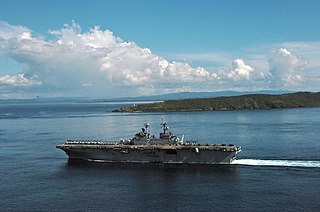
Capul, officially the Municipality of Capul, is a 5th class island municipality in the province of Northern Samar, Philippines. According to the 2020 census, it has a population of 12,323 people.

Palapag, officially the Municipality of Palapag, is a 3rd class municipality in the province of Northern Samar, Philippines. According to the 2020 census, it has a population of 34,034 people.
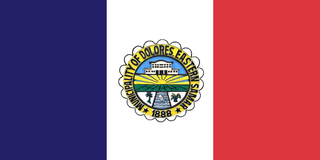
Dolores, officially the Municipality of Dolores, is a 3rd class municipality in the province of Eastern Samar, Philippines. According to the 2020 census, it has a population of 44,626 people.

General MacArthur, officially the Municipality of General MacArthur, is a 5th class municipality in the province of Eastern Samar, Philippines. According to the 2020 census, it has a population of 14,411 people.

Guiuan, officially the Municipality of Guiuan, is a 2nd class municipality in the province of Eastern Samar, Philippines. It constitutes the southeastern extremity of Samar Island and some adjacent islands, surrounded by major bodies of water including Leyte Gulf and the Philippine Sea. According to the 2020 census, it has a population of 53,361 people, making it the most populous municipality in Eastern Samar and the second most populous administrative division in the entire province after the capital city Borongan.

Jipapad, officially the Municipality of Jipapad, is a 5th class municipality in the province of Eastern Samar, Philippines. According to the 2020 census, it has a population of 8,439 people.

Llorente, officially the Municipality of Llorente, is a 3rd class municipality in the province of Eastern Samar, Philippines. According to the 2020 census, it has a population of 21,459 people.

Mercedes, officially the Municipality of Mercedes, is a 5th class municipality in the province of Eastern Samar, Philippines. According to the 2020 census, it has a population of 6,112 people.

Taft, officially the Municipality of Taft, is a 4th class municipality in the province of Eastern Samar, Philippines. According to the 2020 census, it has a population of 18,786 people.

Tolosa, officially the Municipality of Tolosa, is a 5th class municipality in the province of Leyte, Philippines. According to the 2020 census, it has a population of 20,708 people.

Catbalogan, officially the City of Catbalogan, is a 5th class component city and capital of the province of Samar, Philippines. According to the 2020 census, it has a population of 106,440 people.






















